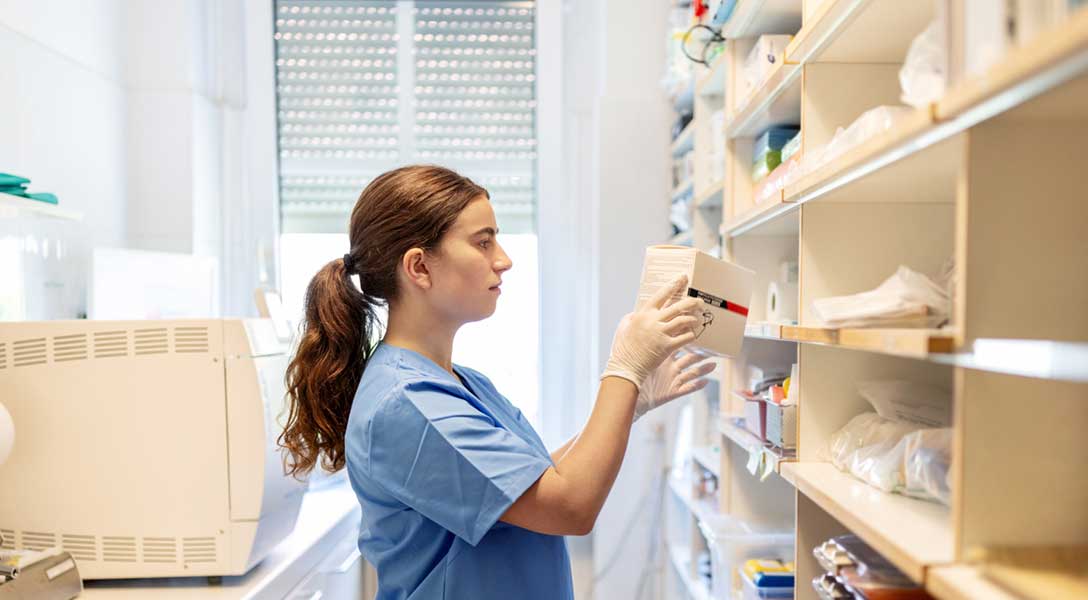
Global Perspectives: Epidemiologists Robert Haley and Trish Perl on fighting COVID-19
Robert Haley and Trish Perl are leading experts in the study of epidemiology and infectious diseases at the University of Texas Southwestern Medical Center.
Haley is a professor of internal medicine and director of the Division of Epidemiology in the Internal Medicine Department and holds the U.S. Armed Forces Veterans Distinguished Chair for Medical Research honoring America’s Gulf War veterans. Perl is a professor of internal medicine and director of the Division of Infectious Diseases in the Internal Medicine Department and holds the Jay P. Sanford Professorship in Infectious Diseases. They have each authored more than 150 articles for peer-reviewed scientific journals and have worked for or been involved with studies at the Centers for Disease Control and Prevention in Atlanta.
The Federal Reserve Bank of Dallas recently hosted Haley and Perl as part of the Bank’s Global Perspectives speaker series. This series was launched at the beginning of 2016 with the objective of bringing leaders from the worlds of business, academia and policymaking to the Dallas Fed to share their insights on global, national and regional developments. The June 24 event was conducted as an online-only event as a result of the COVID-19 pandemic and social distancing measures.
Haley, Perl and Dallas Fed President Rob Kaplan discussed the ongoing pandemic, how best to contain it and prospects for a vaccine. The following are excerpts from their conversation, edited for clarity, and presented by topic.
On what makes COVID-19 a challenge:
Perl: Coronaviruses are actually relatively common causes of respiratory tract infections or the common cold. Everyone who is listening has probably had it by the age of 20, and we usually don’t get very sick. What was very different about SARS (which emerged in 2002) and also MERS-CoV (which emerged in 2012) and now SARS-CoV2—the virus that causes COVID-19—is that these are not only coronaviruses, but they also have some unique characteristics.
First of all, they are very infectious. They are what we call “fit,” which means that they can infect one person to the next. Second, they attach to receptors that are in the lungs, unlike the other coronaviruses, and that’s why they can cause a more serious illness. Third, they are new. So, we have an entire population that has never been exposed to these. They [the population members] have no natural immunity.
At the beginning of these outbreaks, what we call the reproductive number—how many people do I transmit this virus to—was around four. So, every person who had COVID was giving it to four more people. Those four people were giving it to four more, so all of a sudden you have 64 people infected. It is just very explosive.
And then finally, we don’t have any kind of vaccine or treatment for this, and so our normal strategies to mitigate have not been in place, which means that we have gone back to the kinds of strategies that we used in 1918, when we really had the last extremely large pandemic.
Haley: I might add just one other characteristic of this virus. For unknown reasons, it has a really remarkable ability to provoke your immune system. So, the people who get very sick, who end up in the intensive care unit—as they are possibly getting well, getting better—suddenly their immune system goes wild and attacks the entire body and many people have died with what we call a “cytokine storm.” We have seen that with other viruses, but this virus has much more propensity to do that.
On the effectiveness of masks:
Perl: There are a couple of very good studies that have come out that have looked at how effective masks are in the setting of COVID-19, and they find that wearing masks are reducing infections about 70 percent. So, masks are highly effective. And that is just with a regular mask.
The only real indication for (higher grade) N95 masks is in health care settings, when you are talking about infectious diseases. In general, in health care, we also are just wearing regular medical masks. Cloth masks are a little bit less effective than regular masks. Interestingly, there are things you can do to cloth masks, like adding the material that is used in nylon stockings, to make those actually even more effective. But the best thing you can do is to wear something. Cloth masks and surgical masks are both effective.
Haley: Early on in the epidemic—back in March– there was some confusing discussion of masks, partially due to the fact that we didn’t have enough N95 masks. We didn’t want everybody to go out and buy them because then the doctors and nurses couldn’t get them. There was also a focus on protecting the wearer, and not a lot was known about cloth masks at that time. But since then, we have really changed the focus, and we know now not only does a cloth mask protect the wearer somewhat, it’s really effective in preventing the wearer from broadcasting viruses to everybody else.
If 40 to 50 percent of cases of the illness and people who are infected never get symptoms, and the people who get symptoms are most infectious for the two or three days before they get sick, the majority of the transmission out there is by just talking, laughing, yelling, breathing—people who are asymptomatic and don’t know they have it. That’s why it’s spreading so wildly out there.
If everybody wore a mask, almost all of that [transmission] would be stopped, both by containing it in the person who is infected—they wouldn’t be spreading it to others—and the other people would be protecting themselves somewhat. There are 15 states [as of late June] that have mandatory masking requirements. And in those 15 states, after about three weeks of one of those mandates going into effect, the number of cases started declining by 2 percentage points per day.
People can go out. As long as they maintain the six-foot social distance and wear masks, we should be able to contain the spread.
On testing:
Perl: There are two primary things we test for. The first is testing for the virus. Most of the strategies that are currently being used to test for the virus are what we call PCR-based [polymerase chain reaction]. We are looking for pieces of the virus’ DNA or RNA; it’s actually an RNA virus. There are different ways of doing this PCR-based test. The most reliable take a little bit longer, and so that’s what’s commonly used in hospital laboratories. The sensitivity and specificity of these tests, how much disease they identify and when they should and when they shouldn’t be used, depend on the different platforms that we are doing the testing on. The results of these tests take anywhere from two to 12 hours, depending on the test.
Then there are the rapid tests. Some of the rapid tests, which are also PCR-based, take about 45 minutes. Those also are very sensitive and specific. There are other rapid tests that are PCR-based but use a different kind of technology and are less sensitive. What happens with those tests is that we have a lot of what we call false negatives. So, when they are positive, they are good. But if they are negative, you cannot be assured that the people tested do not have the disease. It can be up to 50 percent that we miss.
The second type of tests we do are the blood tests. Those are called serology tests. Those are for antibodies. And again, there are a whole bunch of different testing platforms out there. If the test finds that you have the antibodies, it means that you have had infection. That is interesting for epidemiologists, like Robert and me. We can take your plasma and can give that convalescent plasma to sick patients.
It does not, however, guarantee that you have immunity to the disease. We do not know that at this point. So, you should not think, I have had the disease, I don’t need to wear a mask, etc. We do not know that at this point, which is an important message we want to get across.
Haley: My view is I don’t think you want one of those five-minute [PCR-based] tests. Those are the ones that unfortunately have been used most for screening asymptomatic people, and that’s where they perform poorly. That’s when their sensitivity is low. In our emergency room, we are using this test, but we are using it only for symptomatic people, and if it’s negative, we go ahead with the [more extensive] PCR test often.
On prospects for a vaccine:
Haley: There are two reasons for some optimism. One, is that there are several new technologies that have not been used before or used sparingly in developing vaccines, and those are being cranked in. The second thing is, there are over 100 laboratories working on vaccines. So, that’s positive.
The negative is, we have never produced a vaccine in less than four years. The reasons for that are, one, it takes a long time with a lot of missteps to develop a vaccine, and, two, there are then three phases of tests that you need to do ultimately on thousands of people. The problem is you can’t shortcut that. We can a little bit here because the disease is very common right now, and so you can get studies done more quickly when there are lots of disease to test with.
But if you shortcut this, you take a big risk of having a vaccine that either turns out not to work out in the field or, worse, that has some really bad side effects that you didn’t pick up. You want to be sure that when you get it out in the field, there’s not some group out there that’s just not going to respond. And you want to be sure there’s not some unusual side effect that turns out to be devastating.
Back in the polio days, there were some lots of polio vaccines that actually caused polio, and people got paralyzed or died from the vaccine. That was 50 to 60 years ago. The swine flu immunization campaign in the mid-70s had to be stopped because of side effects of the vaccine after it was in the field.
About the Author
Mark A. Wynne
Wynne is vice president and associate director of research in the Research Department at the Federal Reserve Bank of Dallas.
The views expressed are those of the author and should not be attributed to the Federal Reserve Bank of Dallas or the Federal Reserve System.




